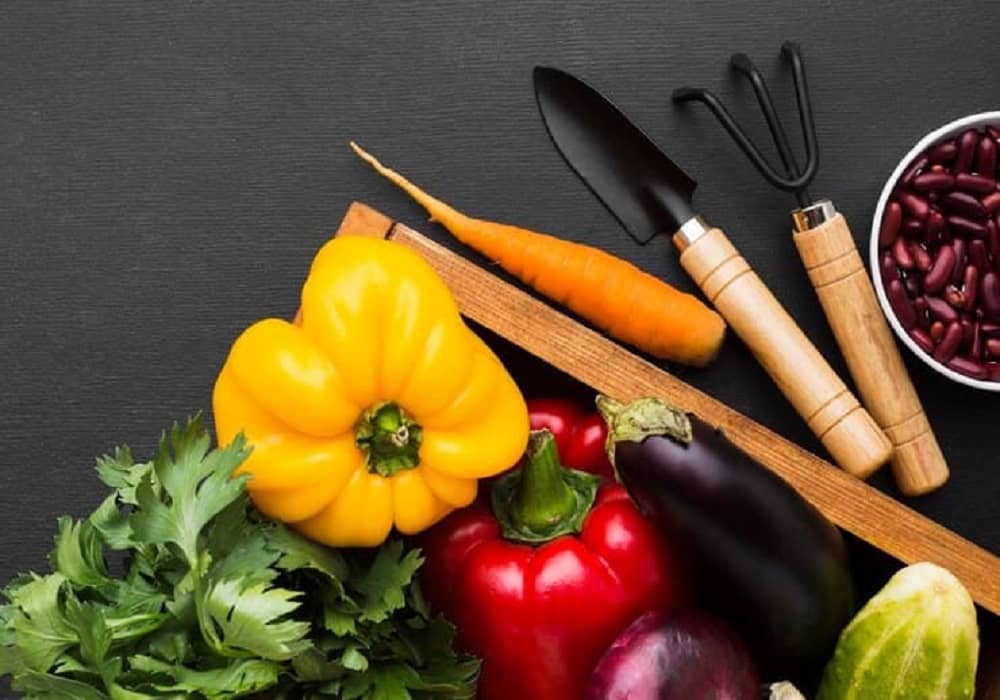How to Choose the Right Kitchen Garden Vegetables in India for Your Climate
Beginning a kitchen garden in India can be a fulfilling and sustainable way to enjoy fresh vegetables while minimizing your carbon footprint. However, due to the wide variety of climates throughout the country, it is essential to choose the right kitchen garden vegetables in India to ensure successful growth. In this article, we will provide guidance on how to select vegetables for your kitchen garden, customized to your specific local climate.
Understanding India’s Climatic Zones
India’s extensive geography encompasses several distinct climatic zones, including tropical, subtropical, arid, and temperate regions. To make the best selections for kitchen garden vegetables in India, it is important to first understand the climate of your area.
Tropical Climate (e.g., Kerala, Tamil Nadu, Goa): Characterized by hot and humid conditions with temperatures usually above 25°C.
Subtropical Climate (e.g., Delhi, Punjab, Uttar Pradesh): Features hot summers and cold winters.
Arid and Semi-Arid Regions (e.g., Rajasthan, Gujarat): Known for high temperatures and limited rainfall.
Temperate Climate (e.g., Himachal Pradesh, Jammu & Kashmir): Experiences cool summers and cold winters.
Once you ascertain the climate of your region, you can make knowledgeable decisions about which vegetables are best suited for your kitchen garden.
Factors to Consider When Choosing Vegetables
When picking kitchen garden vegetables in India, you should take the following factors into account:
Temperature Tolerance
Vegetables have specific temperature ranges where they flourish. For instance, leafy greens such as spinach and lettuce perform well in cooler temperatures, whereas crops like tomatoes, chillies, and beans thrive in warmer climates.
Seasonality
India has different growing seasons:
Rabi Season (Winter crops): From November to April
Kharif Season (Monsoon crops): From June to September
Understanding these seasons can help you select the right vegetables based on their natural growth periods.
Water Requirements
Certain vegetables, such as lettuce and spinach, need more water, while others like brinjal (eggplant) and okra can adapt to drier conditions. It is wise to choose vegetables that align with your area’s rainfall and your garden’s water availability.
Soil Type
Indian soils differ widely, ranging from sandy soils in arid areas to loamy soils in more fertile regions. Testing your soil to determine its pH and nutrient content will help you select vegetables that thrive in your specific soil type.
Best Kitchen Garden Vegetables in India for Different Climates
1. Tropical Climate Vegetables
For those residing in tropical areas, the constant heat and humidity create an environment ideal for growing heat-tolerant vegetables.
Okra (Bhindi): This vegetable excels in hot, humid climates and is a common ingredient in many Indian dishes.
Chillies: Varieties such as green and red chillies thrive in tropical conditions.
Cucumbers: Require warm weather and abundant sunlight, making them perfect for tropical environments.
Brinjal (Eggplant): Grows well in humid conditions and yields abundantly during warm seasons.
Tomatoes: Can be cultivated year-round in tropical climates provided they receive enough sunlight and warmth.
2. Subtropical Climate Vegetables
In subtropical areas, where summers are hot and winters are cold, the selection of vegetables will depend on the season.
Spinach: Thrives in cooler weather, making it an excellent choice for subtropical winters.
Cauliflower: Well-suited for cooler temperatures, it grows effectively during the rabi season.
Carrots: Can be cultivated in the cooler months of the year.
Coriander: Performs well in moderate temperatures, flourishing in subtropical winters.
Tomatoes and Beans: These vegetables thrive in the warmer temperatures of subtropical summers and can withstand both hot and mild winters.
3. Arid and Semi-Arid Climate Vegetables
In arid regions like Rajasthan and Gujarat, conserving water is essential. It is advisable to select vegetables that can withstand high heat and limited water availability.
Chili Peppers: Require minimal water and can endure extreme heat.
Cucumbers: With adequate watering, they can flourish in arid climates.
Bottle Gourd (Lauki): A drought-resistant vegetable that grows well in arid surroundings.
Pumpkins and Squash: These crops thrive in hot, dry environments and need little water once established.
Pigeon Peas (Toor Dal): A resilient legume that does well in dry regions with very little irrigation.
4. Temperate Climate Vegetables
In cooler areas, you can cultivate vegetables that need lower temperatures and extended growing seasons.
Lettuce and Spinach: These leafy greens flourish in cool weather, making them well-suited for temperate climates.
Cabbage: Grows effectively in cooler temperatures and is ideal for winter in temperate regions.
Peas: Can be cultivated in the cooler months, preferably during the rabi season.
Radishes: Quick-growing and suitable for winter and early spring in cooler climates.
Tips for Successful Kitchen Gardening in India
Companion Planting: Certain vegetables thrive when grown together. For instance, tomatoes and basil complement each other well, as basil can help keep pests away from tomatoes.
Soil Preparation: Enhance soil quality by incorporating compost and organic materials. Healthy soil promotes better vegetable growth.
Watering: Watering early in the morning or late in the evening is best to minimize evaporation losses in hot weather.
Mulching: Use mulch to help retain moisture and control soil temperature, particularly in arid areas.
Conclusion
Selecting the appropriate vegetables for your kitchen garden in India requires an understanding of your local climate and choosing crops that will prosper in those conditions. Whether you are cultivating vegetables in the tropical warmth of Kerala or the cooler elevations of Himachal Pradesh, there are numerous options that fit each environment. By taking into account factors such as temperature, seasonality, water requirements, and soil type, you can cultivate a successful kitchen garden and relish fresh, homegrown vegetables throughout the year. Begin with small-scale gardening, try different things, and find joy in the process of growing your own vegetables!
